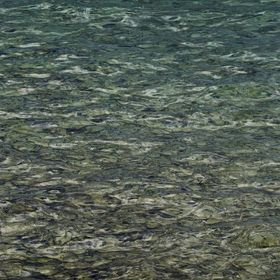Two images taken at the same place, within the same minute, and subsequently "spliced".
Two images taken at the same place, within the same minute, and subsequently "spliced".
Read less
Read less
Views
599
Likes
Awards
People's Choice in 50/50 Water Shots Photo Challenge
Peer Award
Outstanding Creativity
Superb Composition
Absolute Masterpiece
Top Choice
All Star
Superior Skill
Same photographer See allBehind The Lens
Behind The Lens
Location
Photo was taken in the Lake Ohrid "reed forest" that lines its shores.Time
July 1st, 14:53 hrsLighting
Some would say, the worst time of the day to use Daylight, but the ambient allows it nicely. Nothing but sunlight in this image!Equipment
Both photos used in this composite were shot out of hand, with no other equipment whatsoever. The camera used was Canon D10, an excellent, small amphibious model, very well suited for snorkeling (although not deeper than 10 meters / 33").Inspiration
My summer days are mainly spent in underwater photography, since the Lake offers an incredible range of themes and varieties within each of those. So just putting your eyes under the surface creates all the inspiration you need. And reed forest is one delightful eco-system, giving shelter and food to great number of life sorts, from the tiniest bugs and shells to the largest of fish, amphibians, reptiles, crustaceans and of course, vegetation. Fishes spawn in the reed-protected shallows, dragonfly larva lives there before and after its metamorphosis, various birds inhabit the reed too... So, themes enough for a lifetime of photography on both sides of the surface.Editing
This image is a composite of two photos taken subsequently on the same location. The first one is just above the surface, and right away I took the second one, underwater, vertically exactly under the camera position of the first one. Later I merged both photos into one, allowing the surfaces to "mix". The only thing that needed correction was the fact of input angle difference between air and water photo, since water as an optically different element "enlarges" the scene and visually "shortens" the distance. For an uncorrected lens (having flat port), everything seen as 3 will be measured as 4. So, in the post-process the air picture had to be slightly zoomed-in, to align it with the apparent distance of the water photo. The final composite was then cropped to eliminate the irregularity in photo sizes, and to form the final frame. A copy was made for upload, and slightly sharpened after resizing.In my camera bag
No bag, if I can avoid it! I use a million-pockets photo vest and distribute two cameras and all the spares. Those are batteries, ND and CPL filters, and a small ballhead camera clamp that I carry instead of tripod if I do not plan the shoot in advance. Other things that may come handy for improvising are a pocket knife, a length of strong thin rope, and a lighter. Much can be done with this basic gear, and I like to "travel light and go far".Feedback
This image has been planned, and I knew what to do before I went into the water - both before and after taking of photos. So it was really no big deal. I used to try to do similar photos in one click, keeping the surface line through the middle of the lens port, but this is not easy. The port is small, and water surface tension wouldn't allow the surface line to be sufficiently fine. The blurry zone is much too large for the small window in the casing. It could work if I was using some glassbox (jar?) to distance the waterline from the lens, but then the camera (which has an "automatic macro") would focus wrongly. Anyway, even if there was manual focusing available (and with D10 it isn't), the real and apparent distance (4:3) would still be different in the final image; much harder to solve. Thus it seemed easier to make a composite where everything could be corrected in the post-process.






























